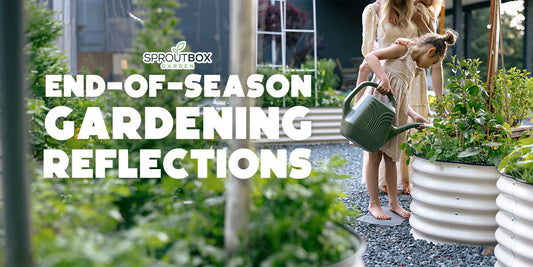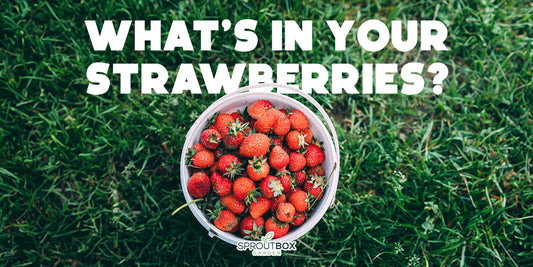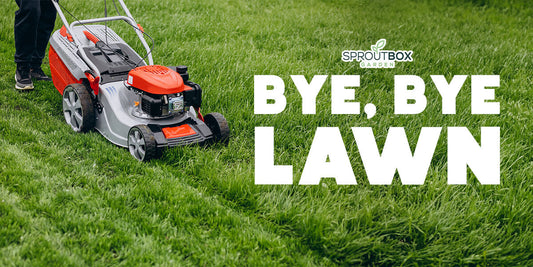Succession Planting 101 – Maximize Your Garden's Potential
>> Download The Slideshow For Free Here.
Masterclass Notes.
Are you ready to unlock the full potential of your garden? Succession planting is the key to getting the most out of your garden space all season long. By strategically timing your plantings, you can grow more crops, enjoy better flavors, and make your garden a productive, thriving haven.
Here’s your complete guide to succession planting—perfect for beginners and seasoned gardeners alike!
What Is Succession Planting?
Succession planting means planting a new crop in the same space after the previous one has been harvested. Instead of letting your garden beds sit empty, you fill them with new plants that thrive during the current growing conditions.
For example:
-
Harvesting radishes early in the season? Use that space to plant arugula or beans next.
-
Pulled out garlic in July? Replace it with broccoli, cauliflower, or cabbage to grow through the fall.
Why Succession Planting Rocks
Succession planting has several benefits that make it a must-try strategy for gardeners:
-
Maximizes Your Space: Every inch of your garden stays productive from spring to fall.
-
Extends the Growing Season: You can grow cool-season crops early, heat-loving veggies during summer, and cold-hardy greens in the fall.
-
Improved Crop Quality: Cooler fall temperatures enhance the sweetness of crops like carrots, beets, and kale.
-
Second Chances: If your first attempt at a crop doesn't work out, succession planting lets you try again within the same season.
How to Plan for Succession Planting
-
Determine Your Growing Days
-
Find your local first frost date using online tools.
-
Count how many growing days remain in your season from today until that frost date.
-
Choose Your Crops
-
For a short growing window (up to 60 days), choose quick growers like radishes, arugula, spinach, or lettuce.
-
For longer growing periods (60-110 days), try broccoli, cauliflower, carrots, or potatoes.
-
Start Seeds in Advance
-
For crops with a longer maturity time, like broccoli, start seeds in seed cells now so they’re ready to transplant into the garden once space becomes available.
A Step-by-Step Guide to Succession Planting
For Fast Crops (Direct Sowing):
-
Enrich the Soil: Add 1-2 inches of compost to replenish nutrients.
-
Plant Seeds: Space seeds appropriately—nine per square foot works for most leafy greens and root vegetables.
-
Cover and Water: Top with a thin layer of worm castings or fine compost and water thoroughly. Keep the soil consistently moist until germination.
-
Thin Seedlings: Once seedlings emerge, thin them out to ensure each plant has enough room to grow.
For Longer Crops (Seed Starting):
-
Start Seeds Indoors: Use seed cells filled with seedling mix or worm casting-enriched soil. Place 3-5 seeds per cell for a better chance of germination.
-
Transplant Later: After harvesting your current crop (e.g., garlic or onions), prepare the garden bed with compost and organic fertilizer before planting your seedlings.
-
Water Well: Keep transplanted seedlings hydrated and watch them thrive!
Succession Planting Combos to Try
-
Garlic ➡️ Broccoli/Cabbage/Cauliflower
Plant garlic in fall, harvest in July, then replant with fall-loving brassicas. -
Tulips/Daffodils ➡️ Bush Beans
Once spring flowers fade, replace them with a lush ground cover of bush beans for a late-summer harvest. -
Early Arugula ➡️ Peppers Start arugula early in spring, then swap it out for heat-loving peppers as the temperatures rise.
Things to Keep in Mind
-
Avoid Gardening Fatigue: If gardening feels overwhelming, it's okay to skip succession planting this year. The goal is to enjoy the process!
-
Monitor Soil Health: Treat your soil like a bank account—keep adding organic matter to ensure every crop has what it needs to grow.
-
Experiment and Learn: Treat every season as an opportunity to refine your gardening skills. Each attempt builds your knowledge and confidence.
Succession planting isn’t just a technique—it’s a game-changer. Whether you're aiming for better harvests, experimenting with new crops, or simply keeping your garden vibrant year-round, this method will help you achieve your goals.
Questions from the Live Session
Here’s a roundup of the Q&A from this session. These questions came from live attendees who were eager to dive deeper into the topic. Below are the answers, formatted for clarity and readability.
Q: Should I direct sow broccoli right now?
A: It depends on your growing season and how many days you have left until the first frost. If your frost date is in October, you can start broccoli seeds anytime between now and the end of July for a fall harvest.
Q: How do you succession plant in a short growing season?
A: The key is to focus on fast-growing crops like radishes, lettuce, or arugula and to plan carefully around your frost dates. Begin with crops that can be harvested quickly and then transition to ones that can handle cooler weather later in the season.
Q: When should I plant a second crop of potatoes?
A: If your summer allows, plant potatoes mid-season, aiming for around July. Make sure the soil is deep and well-prepared for a fall harvest.
Q: How do you decide which crops to pair together in succession for the best results?
A: Focus on timing and space rather than compatibility. For example, plant cool-season crops early, like arugula, and follow them with warm-season crops like peppers. Keep the growing season of each plant in mind to maximize your garden's productivity.
Q: When do you start your peppers?
A: Start pepper seeds indoors around February 1. They need a long growing season, so an early start ensures they’ll mature fully. If needed, you can dig them up in fall, pot them, and let the fruits ripen indoors.
Q: Can I thin out beet greens without jeopardizing the beets?
A: Yes, but keep most of the foliage intact as it helps the beet root develop. Harvest a few leaves sparingly for salads or cooking.
Q: If I don’t have a greenhouse, where should I grow seedlings?
A: Start them indoors under grow lights in cooler months. For succession planting in summer, starting seeds outdoors works well since temperatures are warm enough. Just keep the soil consistently moist.
Q: Do you rotate garlic or keep it in the same place every year?
A: In a backyard garden, crop rotation isn’t necessary if you replenish soil nutrients with compost and organic fertilizers. However, if pests or diseases become an issue, consider rotating crops.
Q: What are alternatives to worm castings?
A: Finely sifted compost is a good alternative. However, worm castings offer unique microbial benefits that compost alone may not provide.
Q: What vegetables should beginners try?
A: Start with vegetables you love to eat! Easy-to-grow options include lettuce, radishes, and bush beans. Focus on learning to grow a few crops well rather than tackling too many at once.



